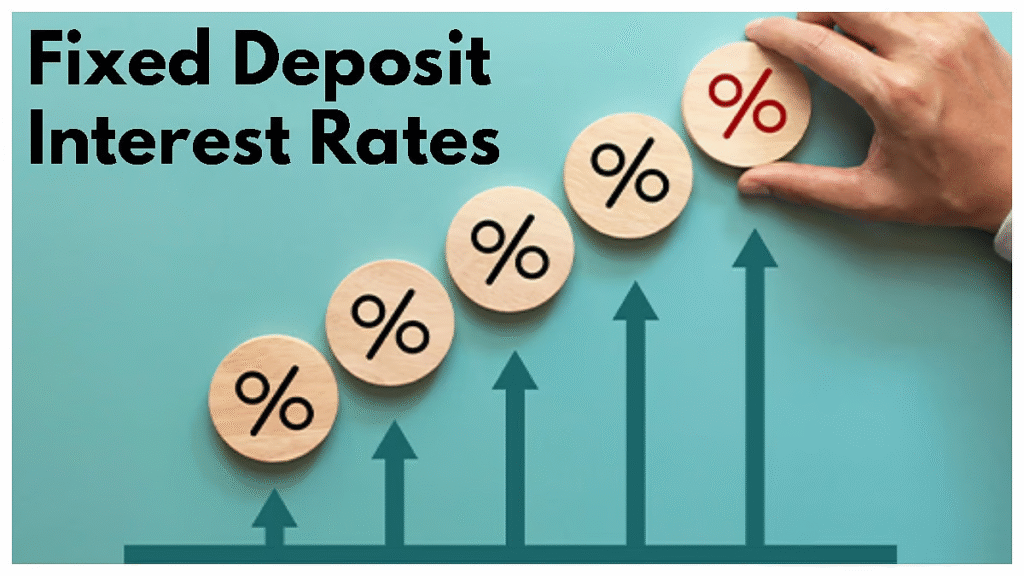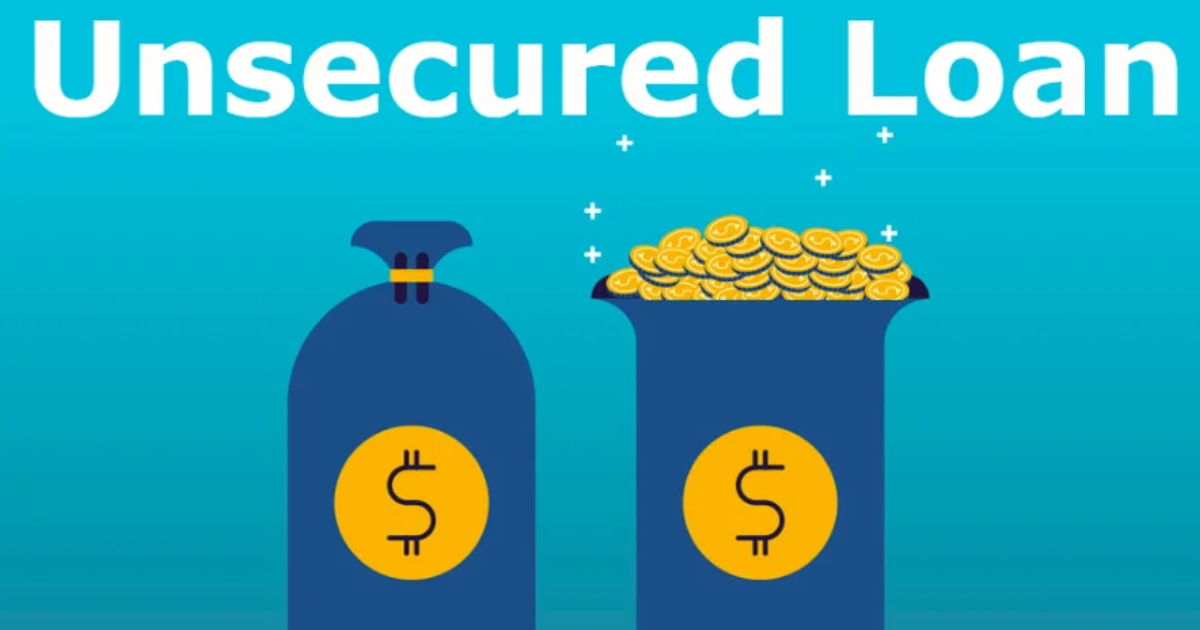Introduction
In today’s rapidly evolving financial landscape, loans are essential tools that help individuals meet personal, educational, and emergency expenses. Among the different types of loans available, unsecured loans stand out due to their accessibility and convenience. But while they offer great advantages, they also come with risks and responsibilities that every borrower must understand.
This comprehensive guide explains everything you need to know about unsecured loans — from how they work, the types available, and qualification criteria, to the benefits, risks, and tips for responsible borrowing. Whether you’re considering a personal loan, consolidating debt, or handling unexpected expenses, this guide will help you make informed financial decisions.
What is an Unsecured Loan?

Definition and Key Characteristics
An unsecured loan is a type of loan that does not require collateral. Unlike secured loans—where borrowers pledge an asset like a house or car—unsecured loans are based solely on the borrower’s creditworthiness.
How Do Unsecured Loans Work?
Lenders evaluate your credit history, income, and debt-to-income ratio to determine eligibility. Since there’s no collateral, the risk to lenders is higher, which often leads to higher interest rates compared to secured loans.
Types of Unsecured Loans
Personal Loans
Used for various purposes like medical bills, home repairs, vacations, or weddings. Usually offered by banks, credit unions, and online lenders.
Credit Cards
Revolving unsecured credit that allows you to borrow up to a certain limit and repay over time. Interest accrues on unpaid balances.
Student Loans (Federal)
Most federal student loans are unsecured and don’t require credit checks or collateral. They’re based on financial need and educational enrollment.
Peer-to-Peer Loans
Provided by individuals or investors through online platforms, these loans are often unsecured and based on personal credit profiles.
Lines of Credit
A flexible form of unsecured borrowing where funds can be accessed as needed, up to a set credit limit.
Benefits of Unsecured Loans
No Collateral Required
You don’t risk losing your assets—such as your car or home—if you default, making them attractive for borrowers who lack valuable property.
Quick Approval and Funding
Many unsecured loans, especially personal loans, offer fast online applications and same-day or next-day disbursements.
Flexibility of Use
Funds can typically be used for almost any purpose, from emergencies to consolidating high-interest debt.
Competitive Fixed Interest Rates (for Good Credit)

Borrowers with strong credit histories can secure attractive fixed interest rates, providing predictable monthly payments.
Helps Build Credit
On-time payments are reported to credit bureaus, helping improve your credit score over time.
Drawbacks and Risks of Unsecured Loans
Higher Interest Rates
Since there’s no collateral, lenders offset their risk by charging higher interest rates, especially for borrowers with low credit scores.
Tougher Eligibility Requirements
Lenders scrutinize your credit score, employment status, and income more rigorously than with secured loans.
Smaller Loan Amounts
Unsecured loans typically offer lower borrowing limits compared to secured loans.
Shorter Repayment Periods
Many unsecured loans have shorter repayment terms (2–7 years), which can result in higher monthly payments.
Late Fees and Penalties
Missing payments can lead to significant penalties, late fees, and a sharp drop in your credit score.
Who Should Consider an Unsecured Loan?
Borrowers with Good to Excellent Credit
If you have a strong credit history and a stable income, you may qualify for low rates and higher loan amounts.
Those Without Collateral
Borrowers without assets to pledge—like renters or young professionals—may find unsecured loans more accessible.
Individuals Needing Fast Funds
For emergencies or time-sensitive expenses, unsecured loans provide quick access to cash.
Debt Consolidators

Borrowers looking to consolidate high-interest credit card debt into a single, lower-interest monthly payment can benefit from personal unsecured loans.
How to Qualify for an Unsecured Loan
Credit Score Requirements
Most lenders prefer a minimum score of 620–640, though better terms are offered to those with 700+ credit scores.
Stable Income and Employment
Proof of consistent income and employment improves your chances of approval and affects loan amounts and interest rates.
Low Debt-to-Income Ratio (DTI)
A DTI below 40% is usually required. Lower ratios indicate better ability to manage additional loan payments.
Positive Credit History
On-time payments, low credit utilization, and long credit history help demonstrate financial responsibility.
Factors to Consider Before Applying
Interest Rate and APR
Compare Annual Percentage Rates (APR), which include both interest and fees, to understand the real cost of borrowing.
Loan Terms and Monthly Payments
Choose a repayment period that fits your budget without extending the term too long and increasing total interest paid.
Origination Fees and Prepayment Penalties
Some lenders charge upfront fees or penalize you for paying off the loan early—read the fine print carefully.
Reputation of the Lender
Choose lenders with good customer reviews, transparent terms, and fair lending practices.
Application Process for an Unsecured Loan
Step 1: Check Your Credit Score
Knowing your score helps determine eligibility and guides you to lenders with suitable offers.
Step 2: Compare Lenders
Shop around for the best interest rates, terms, and fees. Use online comparison tools to save time.
Step 3: Pre-Qualify
Pre-qualification gives you an idea of the loan amount and rate you may receive—without a hard credit inquiry.
Step 4: Submit an Application
Provide personal, financial, and employment information, including bank statements, pay stubs, and identification.
Step 5: Review the Loan Agreement
Carefully read the terms, including interest rate, repayment schedule, and penalties before signing.
Step 6: Receive Funds
If approved, funds are usually disbursed within 1–5 business days, depending on the lender.
Alternatives to Unsecured Loans
Secured Loans
Require collateral and typically offer lower interest rates but come with the risk of asset loss in case of default.
Balance Transfer Credit Cards
Good for consolidating high-interest debt if you can pay off the balance during the 0% introductory period.
Home Equity Loans or HELOCs
These secured loans use your home as collateral and often offer larger loan amounts with lower interest rates.
Borrowing from Family or Friends
An informal option, though it may affect relationships if repayment terms aren’t clear.
Responsible Borrowing Tips
Borrow Only What You Need
Don’t be tempted to borrow more than necessary, even if you qualify for a higher amount.
Understand the Total Cost
Consider the long-term cost of the loan, including interest and fees—not just the monthly payment.
Make Timely Payments
Set up autopay or calendar reminders to avoid missed payments and maintain good credit.
Create a Repayment Plan
Budget your loan payments into your monthly expenses to avoid financial strain.
Also Read : Working Capital Management: A Complete Guide For Businesses
Conclusion
Unsecured loans are a versatile and convenient financial tool that can help individuals manage expenses, consolidate debt, or fund personal goals. They offer fast access to cash and don’t require collateral, making them ideal for borrowers with good credit and stable income.
However, it’s important to understand the potential risks—like higher interest rates and strict eligibility requirements—and to borrow responsibly. By researching lenders, comparing rates, and understanding the loan terms, you can make confident financial decisions that align with your goals.
Whether you’re exploring your first loan or evaluating options for a financial reset, understanding the ins and outs of unsecured loans is crucial to borrowing smart in 2025.
Frequently Asked Questions (FAQs)
What is the difference between secured and unsecured loans?
Secured loans require collateral (like a house or car), while unsecured loans are based on your creditworthiness and don’t require assets.
Can I get an unsecured loan with bad credit?
It’s possible but difficult. Interest rates may be high, or you may need a co-signer. Consider improving your credit score before applying.
How much can I borrow with an unsecured loan?
Loan amounts typically range from $1,000 to $50,000, depending on your credit profile and income.
Are unsecured loans safe?
Yes, if borrowed from reputable lenders. Always read the terms and ensure you can meet the repayment schedule.
Will an unsecured loan affect my credit score?
Yes. Timely payments can improve your score, but missed payments will hurt it. Applying also results in a temporary credit inquiry.
How quickly can I receive funds?
Some lenders offer same-day or next-day disbursement after approval.
Can I pay off an unsecured loan early?
Yes, but check for prepayment penalties in the loan agreement.
What are typical interest rates for unsecured loans?
Rates vary widely based on credit score, ranging from 6% to 36% in most cases.
Are online lenders trustworthy?
Many online lenders are legitimate, but always check reviews, licenses, and Better Business Bureau ratings before borrowing.
Should I use an unsecured loan to consolidate debt?
Yes, if the new loan offers a lower interest rate and simplifies your repayment. Be sure to close old credit accounts if needed to avoid new debt.


